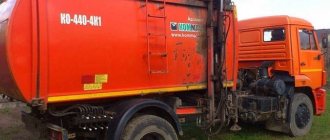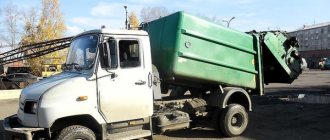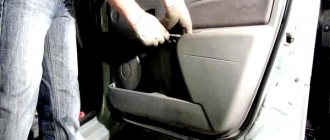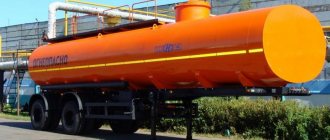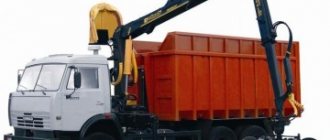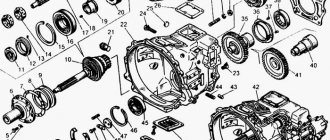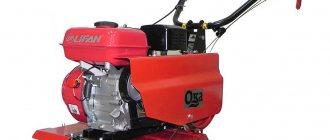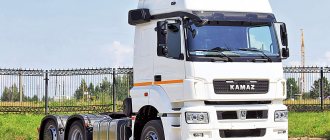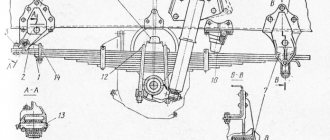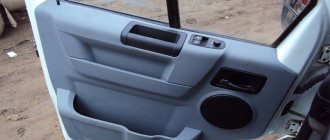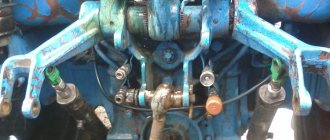For this type of equipment, the loading bucket in the form of a hopper is located at the rear of the body. Rear-loading garbage trucks are used for municipal needs - they help rid the city of garbage and transport it to landfills. The list of its functions includes:
- collection of solid household waste, its loading;
- trash compaction;
- transportation to the place of sorting or disposal;
- unloading.
The profitability of using a particular garbage truck is determined by the capacity of its body. The larger the capacity, the better, which is why garbage trucks are produced on the basis of trucks - KamAZ, MAZ, ZIL.
Design and principle of operation of the machine
Rear-loading garbage trucks are characterized by a fairly simple design, since most of the work is done by manual labor. The machines are not equipped with automatic drives, so they last a long time and are unpretentious to use.
The design of garbage trucks has not changed much over time. The modernization affected the compaction mechanism, the unloading drive, and the volume of the body also increased.
The operating principle of such machines is as follows:
Diagram of loading and unloading of a rear-loading garbage truck
- A worker places waste inside the loading hopper from the rear.
- After filling, the mechanical compactor (it is a push plate) begins the process of compacting the waste.
- After compacting, there is free space for the next load.
The movement of the plate is ensured by a hydraulic system; its operation can be configured either in automatic or semi-automatic mode.
Unloading of waste is also provided by hydraulics; it is carried out according to the principle of a dump truck by automatically raising the front part of the hopper.
It may seem strange that rear-loading garbage trucks continue to be produced and used to this day. The reason is their economic benefits - they are more durable, have a lower cost and are easier to operate than their fully automated counterparts.
Front loading garbage truck
This type of garbage truck is common in the USA. These garbage trucks are designed for containers up to 8 m³. Garbage is loaded from the front (front) part of the garbage truck and is fully mechanized. This type of garbage truck requires special bins with grips for the tilter.
Advantages and disadvantages of a front-loading garbage truck: Automated pickup and tipping of containers into a hopper; The driver controls the entire loading process without leaving the cab; Large volume of containers up to 8 m³. Low degree of waste compaction; Large size garbage truck.
Main advantages of special equipment
This technique, in addition to the already mentioned profitability, has other advantages:
- compatible with most containers;
- high waste compaction coefficient;
- neat work - garbage does not fall out of the bucket and loading hopper;
- high productivity - fast loading and compaction.
Another plus is maneuverability. The car easily passes through narrow yards to garbage cans. It is easy to operate.
Rear loading garbage truck operation
Features of using garbage trucks
Such a popular type of equipment as a garbage truck is used not only for collecting garbage on the streets of populated areas. With their help, waste construction materials are removed from places where construction is taking place.
The peculiarity of garbage trucks is that, depending on their equipment, this type of transport can be used not only for the collection and removal of bulk cargo, but also for the removal of large structures, such as concrete slabs.
When describing the operation of a garbage truck, one cannot imagine a fully mechanized machine that necessarily performs several functions at the same time. There are garbage trucks that are loaded manually; they are also in demand, especially among construction companies.
The main advantage of garbage trucks is their maneuverability, load capacity and the possibility of additional equipment with various lifting mechanisms.
Compatible with various containers
Example of a rear-loading garbage truck
The main equipment that interacts with rear-loading garbage trucks is garbage cans. For potential buyers, the compatibility of containers with the loading method is one of the main parameters. Therefore, when choosing a garbage truck, the appropriate container is taken into account, its type of grip (it can be comb or Euro DIN standard), capacity plays a big role (120-1100 l).
For garbage cans with a comb type of grip, front loading is used. Rear-fill garbage trucks can handle most types of containers. These include comb waste, including “boats” for bulky waste.
It is precisely because of its versatility and compatibility with different types of tanks that rear loading is so in demand and is still relevant today.
MAZ
The rear-loading garbage truck model is equipped with a pressing plate, remote control system, hydraulics and electronics. The Minsk Automobile Plant produces municipal cleaning equipment based on MAZ truck chassis. They are united by a common name - “Sapphire”.
The main design element of a rear-loading MAZ garbage truck is the ejector plate. During loading, it functions as a waste press. When unloading, this mechanism is also activated - it pushes out debris when the rear side of the body is raised. The plant can produce custom-made equipment with a universal type of tipper that works with Euro containers of any modification.
The MAZ garbage truck has a lot of advantages:
Garbage truck MAZ
- The compaction and loading mechanism allows for maximum compaction of waste in a semi-automatic mode.
- The pressing capabilities are increased by the use of Italian-made hydraulic units.
- Those areas of the body that bear the greatest load are made of high-strength steel.
- The rectangular configuration of the body, reinforced with ribs, gives it an even greater margin of safety.
- The structure of the loading hopper and lifting mechanism completely protects against spillage of debris during container unloading.
- The operating air temperature for the hydraulic system is from -30 to +40 degrees.
- Rear view cameras make it easier to maneuver in reverse in the yard.
In addition, for even greater reliability, the body is reinforced along the entire perimeter with sealing seams. External elements are primed and protected from destruction by corrosion.
Types of popular garbage truck superstructures
For many years, the format for loading waste into a bunker has been faithful to the classics: design solutions have focused on the side and rear options. However, the essence of the authenticity of the garbage truck lies in the features of the superstructure. And here the creators of municipal vehicles for transporting solid waste definitely have room for improvement...
The body of multi-chamber garbage trucks from the Zoeller brand has received special attention on the market. The German approach to waste collection and transportation is based on the selective principle, and is implemented in the Zoeller Medium XLSI model. Garbage enters the car body through separate openings, which is a clear plus. True, separation at the solid waste loading stage requires two people.
The body itself has a higher front wall and is made of square pipes, and the entire structure is covered with profile steel sheet. Here, the movement of the ejector plate along the side guide bars is ensured by a telescopic cylinder. The waste is loaded into the hopper through a movable tailgate, which is attached with hinges to the body of the machine. It is the side that is driven by two hydraulic cylinders, and it is blocked by hook clamps integrated into the lower part of the body frame.
The Dutch have played with a new series of body solutions for a garbage truck based on the GPM IV model. GeеsinkNorba designers proposed uniform distribution of waste around the perimeter of the entire bunker using a unique pressing mechanism, increasing the compaction coefficient to 7. Moreover, regardless of the volume of the superstructure, and it ranges from 12 to 48 m3, the loading opening in the machines extends across the width of the entire body , which is very convenient for loading bulky waste.
The body of an Italian-made garbage truck from FARID Industrie SpA has become no less attractive for the Russian consumer. We are talking about the FARID T1 frame heavy-duty vehicle with rear loading, whose potential involves not only the process of manual and mechanized collection of solid waste, but also its pressing. The waste bin itself is constructed of pipes with a square cross-section, and a body made of solid steel sheets with a spherical shape is already integrated into it.
According to the developers, this solution significantly increases resistance to deformation. A hydraulic feed plate is used for loading waste, and a curved ejector plate is used for unloading. According to the engineering concept, waste compaction occurs thanks to articulated plates that move along two guides. Also included in the basic configuration is a combined type tilter, which uses a comb and Euro gripper for containers with a capacity of up to 1.1 m3. Optionally, the manufacturer can equip this garbage truck with a portal loader for bins with a capacity of up to 8 m3.
The Rotopress series garbage truck is also deeply liked by customers. FAUN specialists made the body design original, incorporating the principle of a rotating drum. Namely: the garbage moves towards the front wall of the machine along a cylindrical hopper thanks to the rotational movements of the screw ribs. And during unloading, the movement of waste occurs due to rotation in the opposite direction. This approach provides the garbage truck with a compaction coefficient of 6-9.
By the way, already at the stage of entering the loading hopper, waste is crushed due to cutting edges. However, among FAUN’s technical solutions there is also a front-loading garbage truck, the capacity of the body varies from 26 to 30 m3. This machine collects waste from standard and Euro-class containers.
The garbage truck with a self-cleaning rotary body from MUT is also not without charm. This model is suitable for those who work with small volumes of solid waste, since the appetites of such a minimalistic “monster” are limited to the body capacity range from 4 to 22 m3. Waste from any containers is loaded into it manually or mechanically.
The body dimensions of this model are significantly smaller than its “relatives”, which allows the vehicle to be used in narrow urban spaces. The manufacturer notes that this mini-garbage truck has a sealed body, and therefore it can handle not only solid waste, but also biological waste. It can also transform into a unit with a washing effect with cold and hot water supply, you just need to equip it with a built-in container washing system.
KO-427-42
The equipment is manufactured by the Mtsensk Municipal Engineering Plant. This garbage truck model, based on the MAZ-6303 chassis, has the following technical characteristics:
Garbage truck KO-427-42
- load capacity of the manipulator - 0.5 tons;
- body load capacity - 11 tons;
- pressing ratio — 6;
- vehicle weight - 26.7 tons;
- width - 2.5 m;
- length - 3.6 m;
- height - 2.5 m.
Its main advantages are increased load capacity and excellent maneuverability on city streets and in courtyards.
KO-456
This model is characterized by a high coefficient of waste compaction. The compaction plate operates in three modes:
Garbage truck KO-456
- mechanical;
- auto;
- semi-automatic
When unloading, it moves on special sliders, as a result, it cleans out all the debris and leaves the body clean.
The equipment is controlled from a remote control in the operator's cabin, and additional controls are located on the left side of the body - for unloading, and on the sides - for pressing waste. A reliable hydraulic system ensures smooth movement of all related elements. The body is protected from corrosion by continuous seams and multi-layer paintwork.
The garbage truck is highly maneuverable and easily moves in tight areas.
Important detailsGarbage trucks
Continuing the topic of frameless garbage trucks, we draw attention to the most important elements in their design, which are responsible for the advanced characteristics of these modern municipal vehicles.
A direct continuation of the body of the garbage truck is the compaction chamber, and the pressing force developed by the compactor and the durability of the equipment as a whole depend on its design, no less than on the body, during constant operation with increased loads. Therefore, great importance is attached to its shape, grade and thickness of the steel from which it is made. Each manufacturer has its own unique shape of the press chamber, as well as the body itself, but among all the variety, several main types can be distinguished. This division is connected with the principle by which the pressing plate, the most important part of a rear-loading garbage truck, is driven. For example, such a characteristic as the degree of pressing will depend on the way in which the main hydraulic cylinder driving it is installed. The rules of mechanics, which apply to all objects equally regardless of the existing structure, say that pushing away from oneself is easier than pulling towards oneself. And double-acting hydraulic cylinders, which are widely used instead of two opposite single-acting ones in order to save space, are well known. Therefore, it is desirable that, under load, the cylinder works, leaving the rod, that is, pushes, and returns (folds) at idle.
Additional cylinders that control the rotating part of the press plate are installed in all garbage trucks without exception; they all destroy old sofas just fine, but the main ones, which are responsible for raising and lowering the press plate, have to be mounted in reverse when installed side by side. Thus, the result is a garbage truck with a moderate degree of compaction, but with a relatively simple design compact chamber that requires minimal reinforcement. The side walls of such “tails” experience minimal loads and perform rather a decorative function; first of all, their task is to prevent debris from flying to the sides during loading. An example is Kobit garbage trucks jointly produced with ArzamasKommash, FAUN Variopress II series. The top wall (roof) of such garbage trucks can be completely abandoned, which will create a convenient option for working in conjunction with a CMU for recessed containers.
When installing hydraulic cylinders that operate under a “pushing” load, the press chambers of garbage trucks are more complex and expensive, but it is possible to achieve a greater degree of compression. And the most compacted waste means a maximum reduction in the cost of transporting solid waste, especially where selective waste collection is carried out. To deploy the hydraulic cylinder, you need to move the attachment point from the top of the press chamber. Depending on where the cylinder finds its new fulcrum, two more types of press chamber design are formed. On McNeilus and Norba GPM garbage trucks, this point is located inside the loading hopper, on the edge of the side wall on each side. Because of this, they have such an original shape of the press chamber, by which you can immediately recognize the brand.
With McNeilus, the sidewalls describe a smooth arc from the top to the bottom of the charging vat. The edges of the arc are crowned with a rectangular cross-section reinforcement, to which several transverse stiffeners are adjacent. From above, such reinforced walls are connected by a roof hanging low over the receiving hopper, and it is near these angles of articulation of the roof and walls that the cylinders pushing the press plate are attached. And in the center, a water distribution unit is attached to the inside of the roof. GeesinkNorba GPM has arrow-shaped side walls, hydraulic cylinders are attached to them in the corner area. The roof here is not as large as the McNeilus, and the tailgate itself is not as elongated. The walls are also seriously reinforced, but all the stiffening ribs, as well as the hydraulic lines, are hidden behind large screens with viewing windows. GeesinkNorba uses approximately the same press chamber for its Mini model with a classic body type.
In another case, the hydraulic cylinders are located outside the press chamber, on the sides and rest against its walls in the projection of the loading bath. This option places increased demands on the power circuit of the lower part of the bunker; as a result, the “tails” of these garbage trucks are so powerful that outriggers are even attached directly to them for working with a portal loader or CMU. Even the bottom of the loading bath in such models is reinforced with stiffeners. Although it is worth noting here that manufacturers of other types of garbage trucks also resort to such reinforcement, because thanks to this it is possible to get by with a smaller thickness of the bottom wall: instead of 8 mm, 6 mm is enough. Reducing the consumption of expensive Hardox 400 steel or its analogues without losing strength allows you to reduce production costs.
The reinforced bottom is also useful in our reality, when driving on off-road landfills and on the approaches to them. Therefore, loading bath amplifiers can be seen from different manufacturers: Hidro-Mak, RAPZ, Kobit, but the most powerful stiffeners are undoubtedly from MacNeilus. Obviously, the operating conditions for garbage trucks in North America are more severe than those in Europe. To connect the hydraulic cylinders to the plate, appropriate slots are provided in the walls of the press chamber, which, together with the cylinders, are closed from the outside with elongated oval or rectangular shields. The function of these covers is not only decorative, but also protective, protecting personnel from injury. Like garbage trucks with hydraulic push cylinders located inside the press chamber, models with push cylinders outside the press chamber are characterized by high compaction characteristics of the loaded materials. In particular, garbage trucks of this type include brands Farid, Hidro-Mak, MtsenskKommash, New Way of the Cobra and Diamondback models, Hyva, Ecopress, TverKommash, as well as garbage trucks with a classic Zoeller frame body, etc.
Advantages of Farid garbage trucks
| Characteristic | Comments | Advantage |
| Design | Own development | Farid has over 40 years of experience producing the highest quality waste truck equipment for the European market |
| Main bunker | Rigid steel spatial structure made of flat and curved panels. The side walls, roof and bottom have a rounded shape. The side walls are made of solid steel sheet and reinforced from the outside in the lower part with a horizontal channel section profile. Between the loading hopper and the main hopper at the bottom, profiled acid-resistant rubber is used, which ensures water resistance when closed. | The body design is resistant to deformation, ensures uniform load distribution during the work cycle and ease of drainage of liquid contained in waste through a 2” drainage channel with a ball valve. |
| Loading hopper | Located at the rear, the bottom is made of Hardox 450 HB steel, 8 mm thick, with additional anti-corrosion treatment. Side closing covers with locks to protect the hydraulic cylinders of the feed plate. Hydraulic distributor protection. Hydraulic lift cylinders with hydraulic locks to prevent unintentional lowering | Hardox steel ensures strength and durability of the structure and prevents the accumulation of metal fatigue. High tensile strength eliminates deformation. Anti-corrosion treatment eliminates the formation of rust. Protective covers prevent damage to hydraulic cylinders and reduce the risk of injury |
| Pressing system | Articulated plate (feeding and pressing), moving along two replaceable plastic guides. The hydraulic cylinders of the feed plate are located on the outside of the hopper. The presence of an opening side at the rear for manual loading and safety in the automatic cycle. Pressing modes: automatic single, automatic continuous, manual | A rubber seal around the entire perimeter of the plate prevents small debris from getting behind the ejector plate. Plastic is a more durable material |
| Ejector plate | Rounded ejection plate. The forward and backward movement of the ejector plate is carried out using a double-acting telescopic hydraulic cylinder. The ejector plate in its extreme forward position at the bottom extends beyond the hopper | Efficient cleaning of the main hopper |
| Turner | Handle grip for containers with a volume of 770–1100 l (EN 840-2.3.4 - DIN 30700). Comb gripper for 2 containers with a volume of 120–240 l (EN 840-2). Device for opening container lids with pneumatic drive. Adjustable container opening angle | Adjustable opening bar angle provides equipment flexibility when using different types of containers |
| Management and control bodies | Remote control in the cockpit. The control panel on the loading hopper is located on the right. Manual control of the ejector plate, raising/lowering the loading hopper. Electric control with duplication of manual control of the pressing plate. Electric tilter control. Customizable compaction cycle | Analogue control ensures reliable operation in case it is impossible to use control buttons. Adjustable speed of movement of the carrier and compaction plates allows for flexible adjustment for working with various types of solid waste |
At the same time, high-quality hydraulic equipment, which allows operation without interruption at high pressure, and the operating schemes of the pressing mechanisms used by manufacturers also contribute to the high degree of waste compaction. An example is the electronic system for changing pressure depending on the material being compacted, used by GeesinkNorba. It not only increases pressing efficiency and protects the cuffs, but also reduces operating costs. Of course, when composting mixed waste, the benefits are not so obvious, but with selective collection of solid waste they are more than noticeable. Indeed, why use high pressure, and therefore consume more fuel, to press cardboard and plastic packaging, plastic bottles and aluminum cans?
Another example is from the American company McNeilus, which uses the following garbage compaction mode on its rear-loading garbage trucks of the M2 model range. At the beginning of work, the ejector plate moving inside the body is located near the press chamber. As the pressing plate feeds waste from the loading bath to it, creating a certain pressure, it retreats a little forward; in addition, pressing occurs using the vibration method due to the Smart Pack hydraulic valve, which periodically opens for short periods of time. Thus, inside the body there is a movement of an already compressed briquette of waste, and not a gradual indirect pressing of waste, when areas of different densities are formed in the body, which is why it ultimately turns out to be underloaded.
An important part of a rear-loading garbage truck is the drain valve for the liquid formed when pressing waste, or, as utility workers say in their professional slang, “compote.” And a high degree of compaction is not possible without its formation. The vast majority of manufacturers provide a drain valve at the bottom of the side wall of the loading bath, on the right side in our case. Some companies, in addition, duplicate the workpiece for the tap and on the left side, if their products are in demand in countries with left-hand traffic. In GeesinkNorba, for example, such preparation is used to additionally collect fluid from the body, connecting collection points using a rubber tube. The tap located on the side is convenient to use, but in some cases manufacturers have to weld a tube into the bottom. For the Hidro-Mak and NTM brands, the usual location of the crane is covered by the cylinder of a universal Vario-type tilter, and for McNeilus, longitudinal footrests are provided at the bottom of the side walls, making them as convenient as possible for operators to ride on while cleaning. And since in the States such riding is by no means prohibited, as in our country, but, on the contrary, is encouraged, and the presence of comfortable footrests is even an important qualitative feature of a garbage truck from the point of view of practical operation, it is better to sweat a little while dumping the compote than to run after the garbage truck on foot. To be fair, it is worth adding that on the McNeilus garbage trucks we assemble, they place an angular pipe on the drain pipe and place the drain valve directly under the right step.
Continuing the conversation about such an important detail, which is not ours, as running boards, we must add that European garbage trucks have lattice running boards, folding (lifting) or rotating. Lattice footrests provide reliable grip on the worker's soles, do not block the side lights of the garbage truck and have a low dead weight. Since they, together with the handrails, face backwards, riding on them is not as comfortable and safe as on the side American ones. We have to additionally install call buttons and a rear-view video camera, but despite all the precautions, accidents involving workers falling into the press chamber are periodically recorded around the world. European-type garbage trucks produced in our country, as a rule, do not have running boards installed; occasionally you come across models with running boards installed complete with ready-made loading modules.
In the topic of safe operation of garbage trucks, it is necessary to mention devices that prevent accidental contact of personnel with moving parts of loading mechanisms. They can be either in the form of steel arcs, such as in Hidro-Mak garbage trucks, or transparent plastic screens on a metal frame, like in Kobit, Farid, Zoeller garbage trucks. In addition, the shape of the loading devices, popularly nicknamed “cleanliness,” separates the manipulator’s operating area with rather wide walls protruding backwards, on which both handrails and control buttons are located. In these modules, which are maximally closed on all sides, only a small window remains free for loading, through which a Euro container with a volume of 1.1 m3 fits. Additionally, this window is closed with durable curtains that let the container inside, but do not go outside. “Chistylya” is ideal for collecting waste from European-type containers with a volume of 0.12–1.1 m3, while ensuring maximum cleanliness of cleaning at high speed. No large-size containers, no boat containers, CMUs, or even manual loading. With properly organized logistics (when containers are not overfilled) and when working in civilized areas, such items as a broom and a shovel, which are usually hanging on the back of a garbage truck, may turn out to be completely unnecessary.
The Ros Roca Olympus 16W rear loading garbage truck There is a drainage drain on both sides of the loading hopper, equipped with plugs or a ball valve (depending on the configuration). The thickness of the bunker bottom is 8 mm with the option of increasing to 10 mm, the volume of the bunker is 1.6 m3 with the option of increasing to 2.2 m3. The loading bottom of the hopper and the pressing plate are made of Hardox 400 steel, the walls of the hopper are made of lightweight 3.5 mm steel. The remaining parts of the garbage truck are made of Weldox 700, Domex 700 steel. The garbage truck hopper is made with a keel bottom so that liquid waste drains easily and does not remain inside. In the front part of the hopper there is a compartment (bath) for liquid waste and a wall that does not allow liquid waste to spill during braking. A ball valve drain allows liquid waste to be disposed of when the garbage truck is unloaded at the landfill. All hydraulics are maximally protected from exposure to elements of an aggressive environment.
The official representative of the Spanish company Ros Roca in Russia is ISP Group.
Garbage trucks equipped with similar loading modules are, in particular, offered by us from the brands Farid, Zoeller and Faun. But, as they say, what is good for the bull is too much for the emperor, and each operator in our country has to work in different places, often very vaguely resembling civilized ones. That is why we have a significantly larger supply, so to speak, of garbage trucks with “open” press chambers that allow working with different methods of waste collection, including simply dumping bags of garbage on the ground. Popular solutions have become garbage trucks with press chambers, equipped with a universal tilter for European-type containers, a portal loader, with a large loading hopper with a wide opening that allows loading large materials (sofas, cabinets, frames, doors) entirely. Often this set is also complemented by a crane for working with buried containers, installed on the roof of the garbage truck or on the chassis frame between the body and the cab. The carrier thus gets the opportunity, using one universal vehicle, to work in areas with different income levels and mentality.
An alternative to a gantry loader is a hydraulic winch with a cable mounted on the roof of the garbage truck in the front or closer to the compaction chamber. You can’t handle an open “boat” container with its help, but collecting solid waste exposed to rain and snow in such containers is not the best solution, since today there are enough similar large-volume containers with a “roof” to which you can attach a rope hook . These containers can be loaded either with a straddle loader or with a winch. What the garbage truck's press chamber will ultimately be equipped with depends on the client. Today, all brands offer both machines with a portal and a winch. Even on American McNeilus garbage trucks, which in their homeland do not “burden themselves down” with anything other than a winch, specialists manage to install portal loaders.
DULEVO garbage trucks are the ideal solution for the city
The compact garbage trucks DULEVO 5000 Compatto, supplied by , are equipped with all modern technical solutions. The hopper is made of wear-resistant steel, framed, with a curved bottom and a drain valve. This form allows you to reduce the number of reinforcing elements and forms a container for the liquid fraction, eliminating spillage. The compaction of waste is carried out between the pressing and curved ejection plate with its proportional feed forward, ensuring uniform filling and a high compaction ratio (5:1). The hydraulic cylinders of the pressing plate work for compaction when unfolding, developing maximum force, and the reverse stroke occurs when folding, reducing cycle time.
Much has been made to ensure safety: low-floor cab, push-button controls, remote control, safety guards and manual reset safety devices to keep the operator out of the danger zone. The operating cycle is programmable and can be configured for different types of waste. The design of the rear end and height-adjustable suspension is such that it allows you to transfer waste into any larger garbage trucks, collect garbage from collection vehicles, as well as load garbage manually. The volume of the loading bath is 2.5 m3, there is a folding double-leaf tailgate and a universal tank tipper. Taking into account the above, its small dimensions and high maneuverability thanks to fully steerable wheels make the DULEVO Compatto the ideal garbage truck for tight city streets.
In European garbage trucks, the loading hopper has a tailgate, it allows you to increase its size, and if you need to unload a large container or carry out manual loading, this side is lowered back, like a regular flatbed truck. But McNeilus, as a classic representative of the American school, has a low side of the loading chamber, making it as convenient as possible for manual loading. Thus, tilters for garbage cans have to be installed additionally, depending on the needs of the carrier. Today, McNeilus offers several options for garbage trucks from a wide range of tilters, both of its own production and those of partners of the American company. The first is a simplified loader only for Euro tanks with a volume of 1.1 m3 with folding grip handles. It is attached to the edges of the press chamber at the bottom of the side walls, does not protrude above the edge of the loading bath and does not interfere with manual loading of waste. The second is a tipper for plastic Euro containers, the third is a combined one for all types of containers with folding handles. Both of these tilters are hung on the edge of the loading bath.
For McNeilus garbage trucks, in addition to tilters, taillights that comply with our rules must also be attached to the finished bodies. In general, rear lights for a garbage truck are a big problem, how not to break the lights, how not to cover them with numerous hanging elements. In addition to the main lights, you also need work area illuminators and flashing lights, but you still have to make do with the set that is available in mass production, since it is not profitable to produce lights separately for garbage trucks. So they try to get out of the situation as best they can. Lanterns are placed horizontally, where space allows, and vertically on the sides of the loading hopper, and high above it. GeesinkNorba went the furthest in equipping garbage trucks with modern lighting technology, installing LED rear light units on its GPM models. Such optics are difficult to break, the “bulbs” do not burn out, the possible loss of contact of several individual diodes over time will not in any way affect the operation of the flashlight as a whole, and, of course, it saves energy, extends the service life of batteries, reduces operating costs and contributes to environmental protection environment. For an individual garbage truck this may be a drop in the ocean, but for everyone it is an ocean.
Modern garbage trucks could not help but be affected by the trend of the electronic age - the penetration of electronics into equipment, including control systems, with the abandonment of the usual mechanical connection. Electronic gas pedals, touch screens, multifunctional customizable buttons - all this has become a permanent attribute of today's cars. The same goes for controlling the operation of pressing mechanisms and tilters; instead of levers directly connected to the hydraulic valves, we increasingly see push-button control units, not only on European garbage trucks, but also on domestic brands.
Even the first McNeilus garbage trucks in our country, for example those that are known to Muscovites thanks to the companies Waste Systems and Mekhuborka, were equipped with “European remote controls”. All this causes a certain feeling of annoyance where, for objective reasons, a sledgehammer is still trusted more than a computer. But the garbage trucks produced by the American dealer are equipped with classic mechanical handles that control the press plate and tilter, plus a standard “stop” button in the usual place. Nothing superfluous, and simplicity is the key to the reliability of the machine and its accessibility to the consumer.
MKZ-4609-00
This garbage truck based on the KamAZ 53605-A4 chassis has the following technical characteristics:
MKZ-4609-00
- Engine power - 298 hp. With.;
- Body capacity - 18 cubic meters. m.;
- Waste weight - 8.29 tons;
- Compaction factor - up to 6;
- The load capacity of the tipper is 500 kg;
- Loading bucket capacity - 2 cubic meters. m.
The weight of the vehicle is 12.5 tons. Its overall dimensions are: length - 8.57, width - 2.55, height - 3.630 meters.
